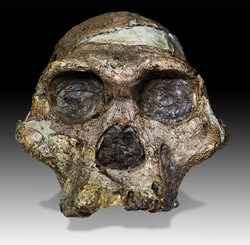
Top stories



RetailDiageo sells East African Breweries stake to Asahi for $2.3bn
Duncan Miriri and Emma Rumney 1 hour


LegalRAF's attempt to reverse settlement denied by SCA judgment
Rethabile Shabalala and Maano Manavhela 1 hour

More news















"This is the first time that Mrs Ples will be returning to Maropeng since the centre's opening eight years ago," said Tony Rubin, MD of Maropeng. And this time a selection of other very important hominin fossils will also form part of the exhibition.
The material at the exhibition is on loan from the Ditsong Museum of Natural History and the Evolutionary Sciences Institute, University of the Witwatersrand, and will be on display from 10 December to 19 January 2014.
Other special fossils that will be on display include TM 1517, the type specimen of Paranthropus robustus discovered at Kromdraai; COB 101, the only hominin fossil discovered at Coopers Cave; and SK 48, a young Paranthropus robustus cranium showing two leopard teeth puncture marks in it. "This is an interesting specimen as it indicates that our hominin ancestors were the hunted rather than the hunter," said Rubin.
Around 40% of the world's known hominid fossils have been unearthed in the Cradle of Humankind World Heritage Site, earning it UNESCO World Heritage Site status in 1999. "It is thanks to these fossil sites, in which the dolomitic conditions were just right for fossil preservation, that we have an understanding of humankind's journey to humanity and the evolutionary trajectory that led us to where we are today."
The discovery of Mrs Ples (or Sts 5 as it is known scientifically) by Dr Robert Broom in 1947 at the Sterkfontein Caves, turned the science world's attention to southern Africa and Africa as a whole in terms of its rich palaeoanthropological history. At the time of its discovery, the 2.15 million-year-old fossil became better known by its nickname, Mrs Ples, and was the most complete fossil cranium ever found.
This world-famous fossil site was originally explored by lime prospectors in the 1890s who, after coming across bits of preserved bone in chunks of mined limestone, brought the fossils to the attention of two scientists: Professor Raymond Dart and Dr Robert Broom. It was only some 40 years later, in 1936, that the two began their excavations of Sterkfontein in earnest. That same year, following the discovery of the first adult australopithecine fossil, the site's significance as a world heritage resource became apparent.
Some 50 years after the discovery of Mrs Ples, the area yielded yet another surprising find: a near-complete skeleton of a second species of Australopithecus, discovered by Ronald J Clarke. The skeleton was nicknamed Little Foot, as the first parts of the fossil found were the bones of a foot. Excavations at Sterkfontein are ongoing. Fossil finds at the site now total about 500 hominins, making Sterkfontein one of the richest fossils resources in the world.
"A chance to see Mrs Ples, alongside the other very important hominin fossil remains is a unique and special opportunity for us all. Maropeng is only a 45-minute drive from Joburg or Pretoria and a visit to the see the exhibition would be a great adventure to enjoy during the holiday season," concluded Rubin.